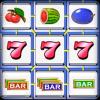I orginally wrote this as a response to this topic but I decided that it steered to far away from it and deverses its own topic.
-----
St. John's wort has several fascinating properties, making it interesting as a longevity herb. The two most important ones are:
1) Hyperforin is an extremely powerful 5-LO inhibitor (IC50 90 nM, about 8 times as potent as curcumine [700 nM])
Arachidonate 5-lipoxygenase (5LO) is the enzyme that produces pro-inflammatory leukotrienes from arachidonic acid. Given the emerging role of inflammation in depression and other psychatric disorders, it seems likely that the antidepressive effects of St. John's Wort are not exclusively due to the reuptake inhibition of neurotransmitters, but also due to its potent anti-inflammatory effects. As 5-LO is upregulated in many inflammatory diseases and cancer cell lines, synthetic 5-LO inhibitors are considered a gold mine for future anti-inflammatory and anti-cancer drugs, but far no synthetic inhibitor has been developed as powerful as hyperforin.
2) Hyperforin is an extremely powerful PXR activator (EC50 20 nM).
The pregnane X receptor (PXR, aka steroid and xenobiotic receptor SXR) is considered the master regulator of xenobiotic metabolism in mammalian physiology. It has a impact on gene expression, strongly upregulating phase I and II detoxification enzymes. Hyperforin is one of the most potent known activators of PXR, even more potent than the prototypical activator, rifampicin. I believe that regularly hitting PXR with low-dose St. John's Wort may excert similar effects as taking large doses of polyphenolic phytochemicals, who induce the xenobiotic response to much lesser degree. A elevated activity in the cytochrome P450 system of enzymes - either genetically or due to lifestyle factors - has been associated with longevity in humans. In hypercholesterolemic rabbits expressing human PXR, St. John's wort extract potently lowered cholesterol, inflammatory biomarkes and prevented the formation of artherosclerosis more potently than lovastatin.
I began taking St. John's wort - which is widely available here in Germany and has a long history of use - several years ago to deal with the mood swings I used to experience (possibly related to a sudden drop in serotinin) and found it effective not to completely prevent them but to reduce their frequency and severity. After taking it for a while without experiencing any negative side-effects and becoming more and more familiar with the literature about St. John's wort and nuclear receptors such as PXR, I decided no keep taking a low dose (180 mg extract, providing ~5 mg of hyperforin) as part of my general longevity regime. Given the pharmacokinetics of hyperforin, this dose is low enough not to significantly affect neurotransmitter reuptake, but high enough to excert some 5-LO inhibiting activity and probably to fully acitivate PXR.
An important fact to consider is that the PXR is a highly promiscuous receptor, activated not only by a diverse array of xenobiotics but also by endogenous ligands and is closely related to the liver X receptor (LXR), which is expressed more tissue-specifically, activated predominantly by endogenous ligands such as oxysterols, plays a key role in cholesterol homeostasis and shares a large subset of target genes with the PXR.
The question of course is: If a high level of PXR activation is beneficial, why hasn't it evolved as the physiological default state? The answer is probably economy. The induction of detoxification enzyes is metabolically costly, consuming vital micronutrients and cofactors. Therefore, in an evolutionary environment where scarcity was the norm, it has proven advantageus to evolve a highly sensitive xenohormetic detector, in order to broadly boost the expression of those enzymes only when needed,
There is an important downside of PXR activation though, which has to be mentioned. The expression of cytochrome P450 does not only boost detoxification of oxysterols and other endogenous metabolic waste but also that of some beneficial, including multiple important drugs, such as statins. This is why anyone taking St. John's Wort together with a prescription drug should be carefully examine possible interactions. PXR activation also inhibits the conversion of vitamin D to its prehormone form, 25-hydroxyvitamin D as part of a physiological feeback mechanism, which makes monitoring of 25(OH)D mandatory. However, as I have written before, this is likely the very reason why low levels of vitamin D are genetically associated with longevity and high levels of vitamin D and the same is true the other way around.
This observation could further refine the economy hypothesis of PXR/LXR activity. One could speculate that the insufficient biochemical ability of the cytochrome system to differentiate between oxysterols and useful cholesterol metabolites such as vitamin D resulted in a case of antagonistic pleiotropy where trade-off phenotypes such as ApoE3 have been positively selected for. The role of vitamin D in immune function is evolutionary more important than the adverse effects of high cholesterol in old age - so we see a higher distribution of ApoE4 in northern latidutes.
Maybe, just maybe, by taking low-dose St. John's wort as well as vitamin D we can overcome this antagonism ![]()
Edited by timar, 28 March 2015 - 11:52 AM.


















































